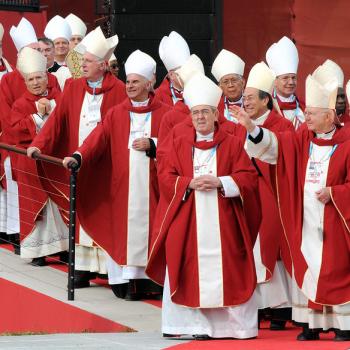Summer in our sweltering region forces a theological question: How does God feel about exposed shoulders in a house of worship? Or toes? Or some glimpse of thigh?
With temperatures in the 80s by 7:30 a.m. services, this is the season for church bulletin items like the one in Our Lady’s: “Dignity & Decorum: Please try not to wear beach shorts, tank tops, and flip-flops to the Holy Sacrifice of the Mass. Thank you.”
In general, casual has pummeled formal everywhere in America, from airplanes to offices. But places of worship — where debates on modesty are not confined to the summer months — may be the final frontier for questions about what constitutes overly risque. And those questions have recently sprung to new life.
A popular campaign aimed at young evangelical women called “Modest is Hottest” has triggered backlash by devout younger women who see the slogan as sexist. When the Bible calls for “modesty,” they argue, it refers to displays of things like wealth and is describing the depth of one’s spirit, not their neckline.Teaching women that their value rises if they have more clothes on is objectifying, a torrent of essays have argued.
“A woman’s breasts and buttocks and thighs all proclaim the glory of the Lord,” said Sharon Hodde Miller, a doctoral student at Trinity Evangelical Divinity School whose critique of “modest is hottest” in the online evangelical magazine Christianity Today was one of the best-read of recent years. “Modesty is an orientation of the heart, first and foremost. It begins with putting God first. To look at an outfit and say if it’s modest or immodest, I’m not sure you can do that.”
Some critics say the drive for looser, longer fabric has political tones, a “modesty nostalgia” for a happier, more fully clothed America that some feel never was. But advocates for less skin in the sanctuary see modest attire as transformational — part of the process of moving into a spiritual head space.
Particularly today as institutional religion bleeds members, many churches — even some theologically conservative ones — advertise that dress is “come as you are.”
“We don’t want clothes to ever be a barrier. That’s one reason we don’t talk about it,” said the Rev. Don Davidson of First Baptist Church of Alexandria.
Some even argue that informal clothing signals not a new lack of respect for institutional religion but a new genuineness and familiarity.
In recent years, I have not come across any churches–liberal or conservative, contemporary or liturgical, rural or urban or suburban, of any denomination–in which men still put on a suit and tie to go to church (as I had to growing up). Is that a bad trend or a welcome development? But what does constitute appropriate decorum? (I don’t usually wear a tie any more, but I do have my own private “rules.”) And while we should all want to “proclaim the glory of the Lord,” shouldn’t there be some modesty considerations?
















